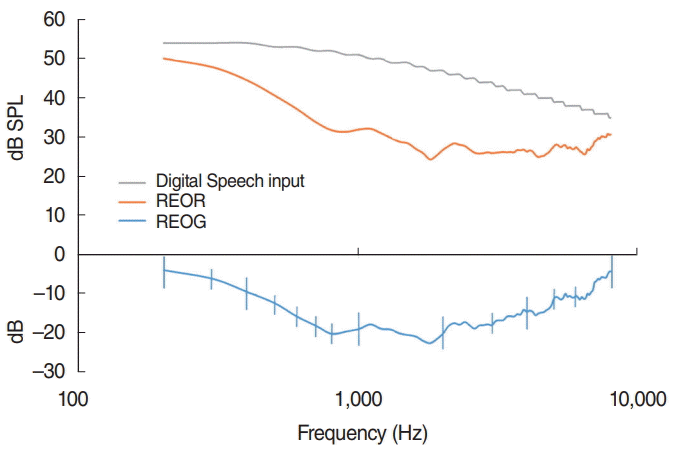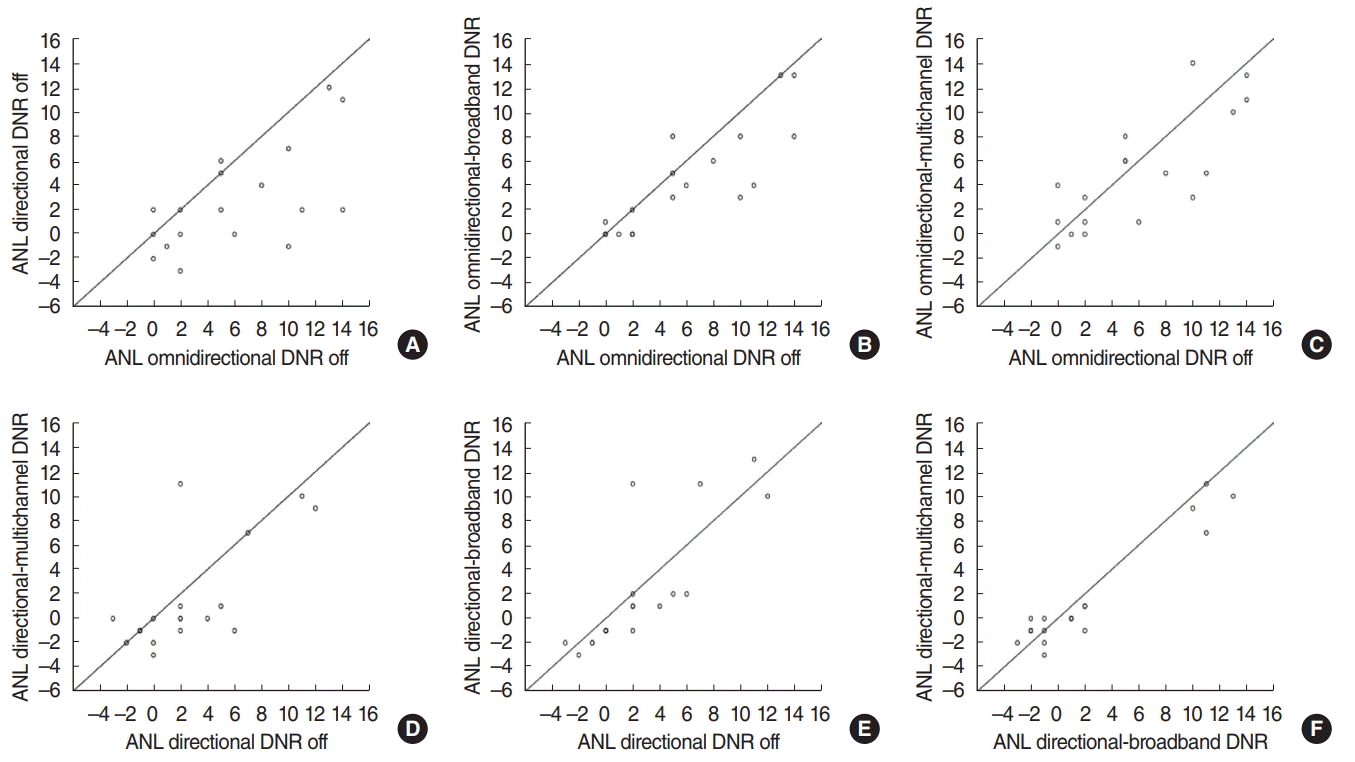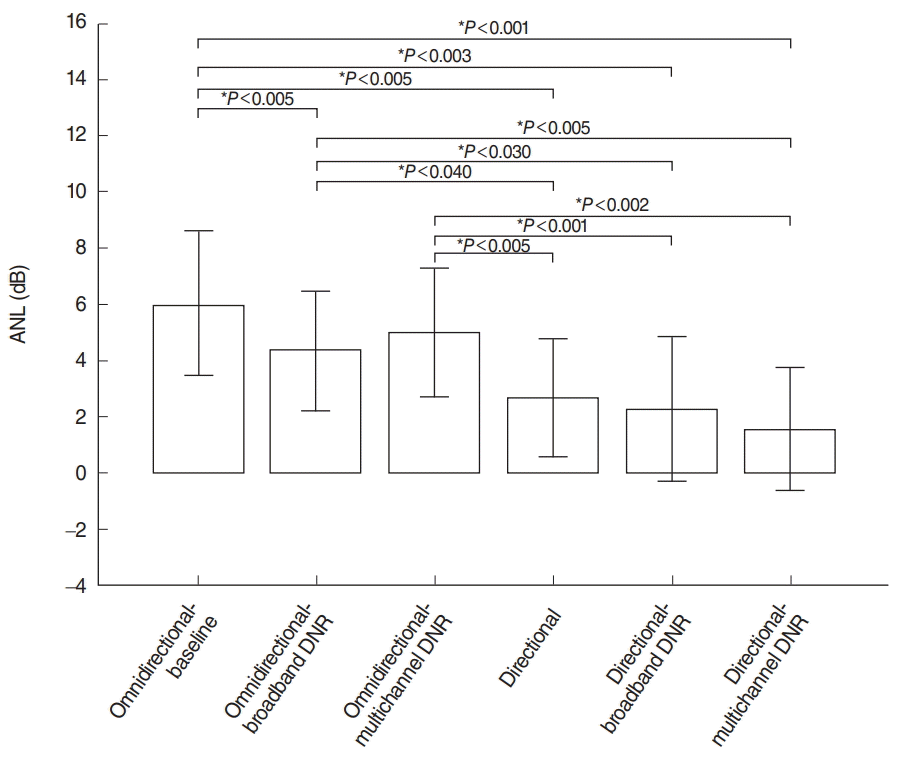1. Kochkin S. MarkeTrak VI: consumers rate improvements sought in hearing instruments. Hear Rev. 2002; Nov. 9(11):18–22.
2. McCormack A, Fortnum H. Why do people fitted with hearing aids not wear them? Int J Audiol. 2013; May. 52(5):360–8.

3. Ng EH, Rudner M, Lunner T, Pedersen MS, Ronnberg J. Effects of noise and working memory capacity on memory processing of speech for hearing-aid users. Int J Audiol. 2013; Jul. 52(7):433–41.

4. Obleser J, Wostmann M, Hellbernd N, Wilsch A, Maess B. Adverse listening conditions and memory load drive a common alpha oscillatory network. J Neurosci. 2012; Sep. 32(36):12376–83.

5. Ricketts TA, Hornsby BW. Sound quality measures for speech in noise through a commercial hearing aid implementing digital noise reduction. J Am Acad Audiol. 2005; May. 16(5):270–7.

6. Alcantara JL, Moore BC, Kuhnel V, Launer S. Evaluation of the noise reduction system in a commercial digital hearing aid. Int J Audiol. 2003; Jan. 42(1):34–42.
7. Boymans M, Dreschler WA. Field trials using a digital hearing aid with active noise reduction and dual-microphone directionality. Audiology. 2000; Sep-Oct. 39(5):260–8.
8. Peeters H, Kuk F, Lau CC, Keenan D. Subjective and objective evaluation of noise management algorithms. J Am Acad Audiol. 2009; Feb. 20(2):89–98.

9. Dillon H. Hearing aids. 2 ed. Sydney: Boomerang Press;2012.
10. Nabelek AK, Tucker FM, Letowski TR. Toleration of background noises: relationship with patterns of hearing aid use by elderly persons. J Speech Hear Res. 1991; Jun. 34(3):679–85.
11. Mueller HG, Weber J, Hornsby BW. The effects of digital noise reduction on the acceptance of background noise. Trends Amplif. 2006; Jun. 10(2):83–93.

12. Neher T, Grimm G, Hohmann V. Perceptual consequences of different signal changes due to binaural noise reduction: do hearing loss and working memory capacity play a role? Ear Hear. 2014; Sep-Oct. 35(5):e213–27.
13. Ansari NN, Naghdi S, Hasson S, Valizadeh L, Jalaie S. Validation of a Mini-Mental State Examination (MMSE) for the Persian population: a pilot study. Appl Neuropsychol. 2010; Jul. 17(3):190–5.

14. Kuk F, Keenan D. How do vents affect hearing aid performance? Hear Rev. 2006; Feb. 13(2):34–42.
15. Magnusson L, Claesson A, Persson M, Tengstrand T. Speech recognition in noise using bilateral open-fit hearing aids: the limited benefit of directional microphones and noise reduction. Int J Audiol. 2013; Jan. 52(1):29–36.

16. Winkler A, Latzel M, Holube I. Open versus closed hearing-aid fittings: a literature review of both fitting approaches. Trends Hear. 2016; Feb. 20:2331216516631741.

17. Kuk F, Peeters H, Lau C, Korhonen P. Effect of maximum power output and noise reduction on speech recognition in noise. J Am Acad Audiol. 2011; May. 22(5):265–73.

18. Ahmadi A, Fatahi J, Keshani A, Jalilvand H, Modarresi Y, Jalaie S. Developing and evaluating the reliability of acceptable noise level test in Persian language. Sci J Rehabil Med. 2015; 4(2):109–17.
19. Lowery KJ, Plyler PN. The effects of noise reduction technologies on the acceptance of background noise. J Am Acad Audiol. 2013; Sep. 24(8):649–59.

20. Desjardins JL. The effects of hearing aid directional microphone and noise reduction processing on listening effort in older adults with hearing loss. J Am Acad Audiol. 2016; Jan. 27(1):29–41.

21. Nordrum S, Erler S, Garstecki D, Dhar S. Comparison of performance on the hearing in noise test using directional microphones and digital noise reduction algorithms. Am J Audiol. 2006; Jun. 15(1):81–91.

22. Brons I, Houben R, Dreschler WA. Acoustical and perceptual comparison of noise reduction and compression in hearing aids. J Speech Lang Hear Res. 2015; Aug. 58(4):1363–76.

23. Freyaldenhoven MC, Nabelek AK, Burchfield SB, Thelin JW. Acceptable noise level as a measure of directional hearing aid benefit. J Am Acad Audiol. 2005; Apr. 16(4):228–36.

24. Aghsoleimani M, Jalilvand H, Mahdavi ME, Nazeri AR, Kamali M. The acceptable noise level benefit from directionality for listeners with severe hearing loss. Clin Exp Otorhinolaryngol. 2018; Sep. 11(3):166–73.






